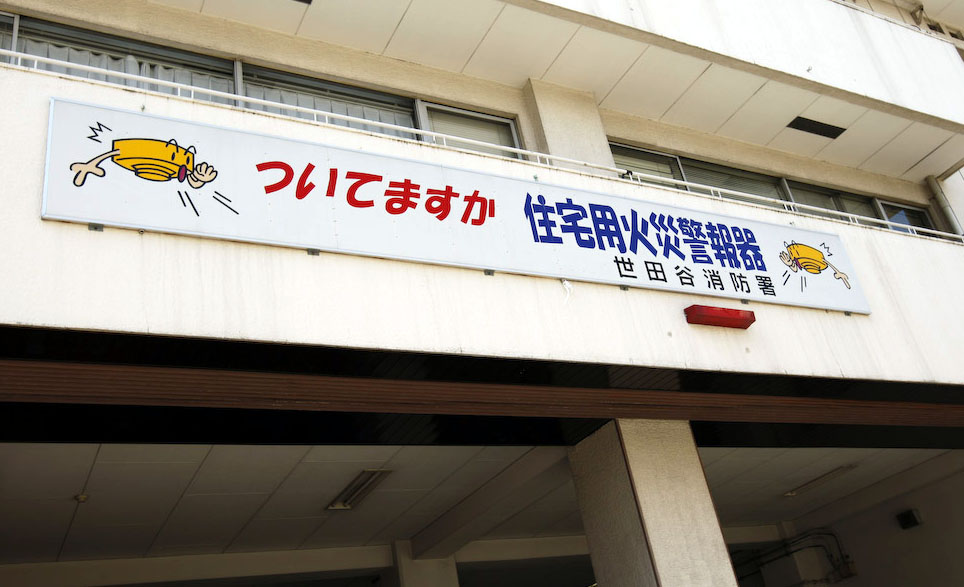A sign at a local Sangenjaya fire station extols residents to install a fire alarm. Is the speaking alarm simply artistic license by the local illustrator or accurate representation of the device’s aural interface? Actually the latter – many alarms sold in Japan have a voice that warns of “fire” to accompany the siren.
One of the pleasures of moving into a new home has been getting up to speed on Japanese domestic appliance (aural) interface norms – including a bath tub that intones in a slightly-too-electronic voice when the bath has been drawn to the correct depth and temperature; a fish grill that warns how much grill time is remaining and, yes the speaking fire alarm.
No word yet from the toilet.
Thankfully.
For a European with a penchant for simple devices spoken feedback of what is happening on the device is often a step too far, but here in Japan it can be found in anything from ATM’s, ticket machines to having the time and date spoken when the key turns in the ignition of a rental car.
Spoken interfaces are often considered a partial solution to illiterate device use – if someone can read the interface then they’re going to understand what is spoken right? Wrong. A least sort of – its a complex issue.
